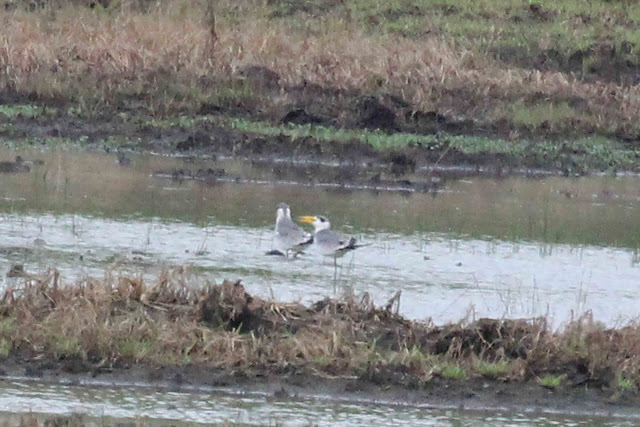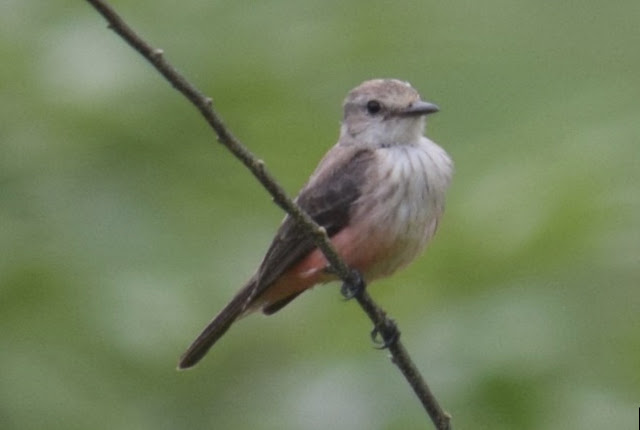Gray-capped Cuckoo and Large-billed Terns at Finca Bayano, a report by Les Lieurance

Had a nice day trip to the finca today with Cindy and Bill Adsett. Cloud cover made the heat somewhat bearable and the roads were passable. eBird list here . I taped two Large-billed Terns . Also found a Gray-capped Cuckoo : Cuckoo with a long tail, shaped like Yellow-billed Cuckoo. Short black bill, dark eye, dark gray slightly bushy cap and dark gray face and nape, gray extending below the eye. Throat rich rufous, breast slightly lighter rufous. Back and wings rufous. Tail, seen only from below, appeared to be black with white spots, placed similarly to spots on Yellow-billed Cuckoo's tail. Bird was in the mangroves. Mangroves suffering a massive infestation of tent caterpillars - perhaps the cuckoo was there for a feast. Bird was very skulky, often perching deep in the foliage.
